Last Updated on January 24, 2023 by Dee
With the popularity of digitally created artworks or electronic painting, it’s important to know how to get started and improve your digital creations. These digital painting tips will help you avoid common mistakes while creating artwork.
I’m both a traditional and digital artist, and I’ve been teaching art for over 15 years. Over that time, I’ve helped thousands of students improve their artwork by sharing my tips with them.
If you’re an avid digital painter, just getting started on your first digital painting, or want to learn digital painting, this blog post is for you!
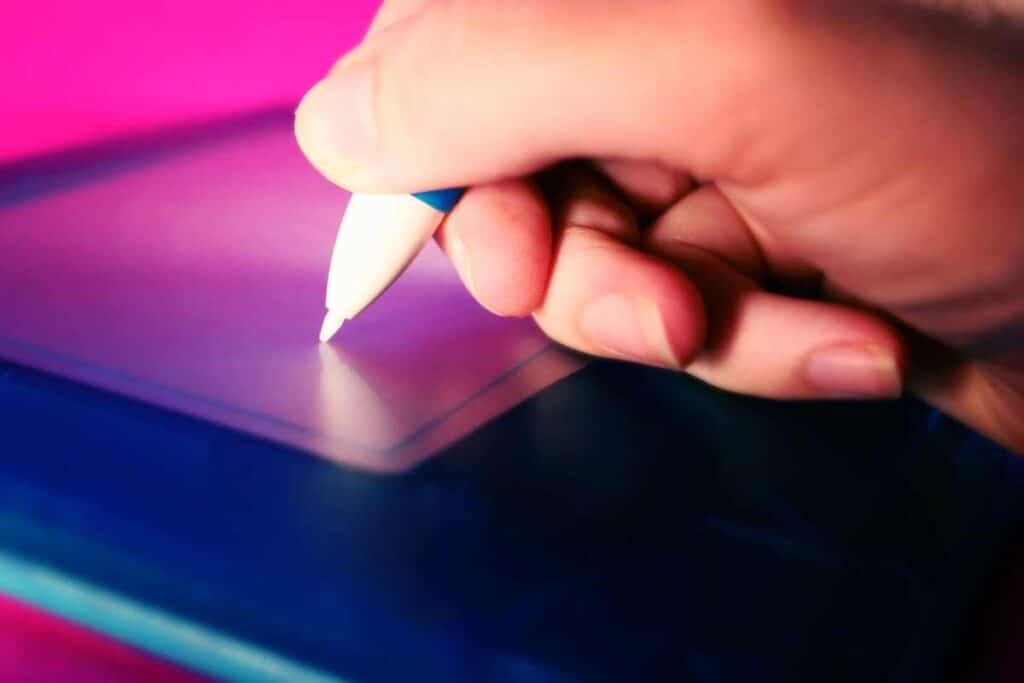
Understanding the basics of digital painting.
Digital painting is a term that encompasses many different methods of producing an image on a computer or tablet.
It is commonly used to refer to work done in programs such as Photoshop, Painter, Corel Painter, or Procreate, wherein the artist paints directly onto the pixels of a digital file; there also exist other methods such as pixel art and vector art which are not typically considered digital painting.
Several skills are essential to this process; the key is the ability to translate your images onto a pixelated canvas, or “raster” image as it is often called.
These simple tricks will help take your work from good to great in no time.

22 Digital Art Tips to Improve Your Digital Creations
If you want to master digital painting, follow the 22 digital paintings below!
Begin with the end in mind & sketch a plan.
It’s a good idea to know what you want to paint before you start and to keep that in mind as you work. Beginner digital artists often start painting without following this first important step.
Planning makes a huge difference to the final outcome!
Sketching a loose idea at the start will save you time and avoid frustration.
The easiest way is to grab a pencil and a piece of paper and manually draw out your composition and subject matter.
You can also annotate your sketch with color ideas, patterns, and other elements you want to include in your painting.
This simple rule alone will save your butt from many frustrating hours of trying to fix mistakes that would be better avoided in the first place.
Check out my Couple Poses Drawing Reference for more drawing inspiration.
Work on your composition.
A great digital painting piece has a strong composition; it should draw the viewer’s attention and lead him through the scene while making sure everything important is visible.
The composition of a painting may depend on its intended purpose. For example, a portrait will not normally have a complex background like landscapes do (for obvious reasons).
As with traditional art, there are some guidelines you can use to improve your compositions: rule-of-thirds, leading lines, and balance.
Rule-of-Thirds
Rule-of-thirds works as it sounds: divide your image into 3 rows and 3 columns, then place the most interesting parts of your composition onto those lines or where they intersect.
Leading Lines
Leading lines are just like they sound; you draw a line that leads the viewer’s eye from one part of the painting to another.
Balance
Balance refers to how well-balanced an object or element is in a certain scene.
For example: if you place your subject at an important point that’s not quite in the center of your painting, there must be another object or element acting as a counterbalance for it to work properly.
Having said that, a good composition doesn’t necessarily have to be balanced; it can also appear that way by accident.
[Related Article: An Easy Guide on How to Change the Opacity of a Layer in Procreate]
Choose the Right Canvas Size
It’s important that you work on a canvas size that will accommodate your final product. If you are going to print out your painting on an A3 sheet of fine arts paper, then you need to make sure your digital canvas size is at least the same size or larger.
If you intend to publish your digital drawings online or on social media, then using a canvas size of at least 1024×768 is a good start.
Set the Right Resolution
The resolution of your digital painting will depend on how you intend to display it.
If you want to make a printout, 300dpi will be good enough!
Online publishing requires 72dpi, but if you plan to upload images in large sizes (10MB+), then 180dpi is better.
Use a Reference Image (or two).
A good reference image will help you better understand and render the subject matter in your digital painting.
Professional digital artists will most often work with a good quality reference image while working on their drawing tablet.
I often work from more than one reference image to paint things from different angles or include different elements.
[Related post: 18 Texture Drawing Examples to Help You Get Inspired: How to Draw Texture]
Use different brushes for various effects, such as blending colors or adding texture.
Learn about the different types of brushes.
When starting, most people are confused about the different types of brushes; they seem pretty similar when looking at them.
But there are some differences between them, and knowing them will allow you to achieve better results in a shorter amount of time.
When you work digitally, it’s important to understand that a brush is not just a “brush”.
Sure, it can be used for painting but there are other things you can do with it as well.
For example, the Blending Tool in Photoshop is just a round Airbrush tool.
Examples of different brushes include:
- Drawing Brushes (A basic brush with hard edges and constant size)
- Airbrush
- Pencil (Also known as “Hard Round”, looks like a pencil being drawn on paper, but the line may be sharp or blurry depending on the pressure you use)
- Paintbrush (Sets the overall size of an area you paint, but leaves the line smooth.)
- Another type of brush is a Gradient Brush. You can adjust them in order to create both linear and radial gradients with different degrees of transparency and color variations.
Here is an image showing different types of brushes in Procreate:

Rotate your canvas to add more depth and perspective.
This can help you add depth and perspective to your scene by having a larger space to work on.
Rotating your canvas can help you better define the horizon line in a landscape painting or the vanishing point of a cityscape.
Make use of layers to edit your work without affecting the original image.
Using layers will allow you to edit your image without destroying what you created so that you can always come back and fix something.
Try out different drawing tools like smudge, blur, sharpen, etc., to achieve the desired look.
A couple of great tools Photoshop offers for cool digital art and digital painting are Blur and Smudge: the former is used to soften an area while the latter blends colors together.
You can get some great results with these tools!
Use layer masks when you want transparency or partial opacity.
Layer masks allow you to change the opacity of a layer, as well as make it semi-transparent.
This feature is great when you want to include more than one image or artwork in your scene and have parts of those images show through each other.
Save often! It’s better to be safe than sorry.
If you’re not a Photoshop pro, chances are you’ll mess up and destroy something. So save your work often!
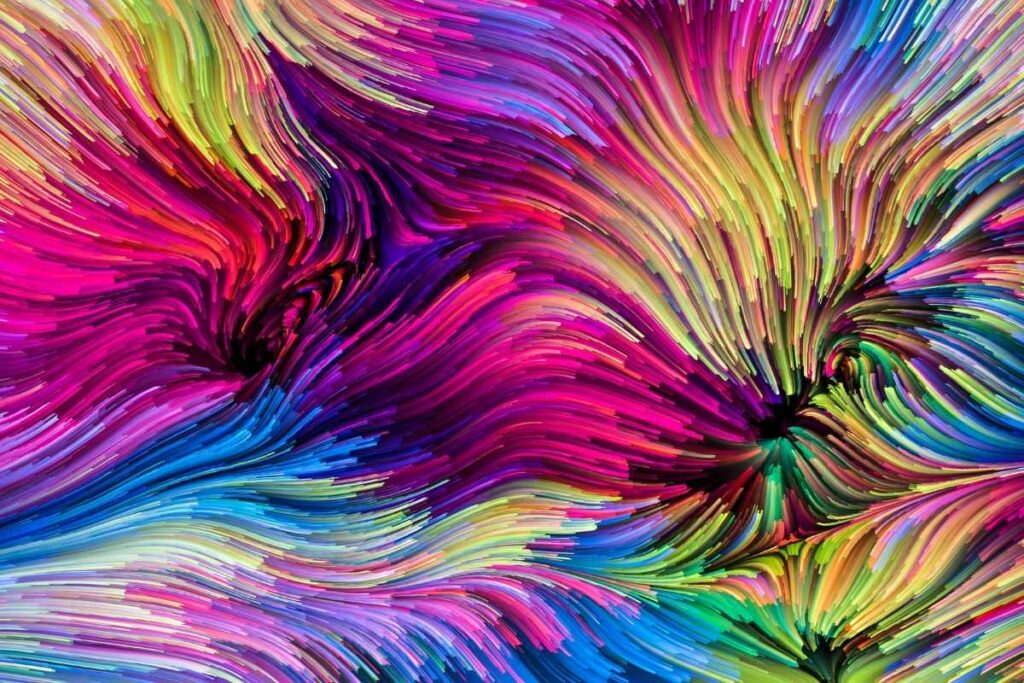
Learn about pressure sensitivity if your tablet supports it.
Pressure sensitivity is a check box in your tablet driver software that allows you to increase or decrease your brush size depending on how hard you press on the pen.
It’s not available for all brands, so don’t worry about it if it isn’t there. It’s just an extra feature, after all!
If you are working on an Apple Ipad then pressure sensitivity for your Apple Pencil is installed by default.
I create my digital paintings on an Ipad Pro, and I just love how it is responsive to how much pressure I put on the apple pencil.
Don’t forget to stop occasionally and take a step back from what you’re doing (literally).
All professional artists do this. This will help you gain perspective on your work and let you see things differently.
For example, you may notice something you had never seen before; it’s always good to keep an open mind!
Study the great artists out there and paint everything that excites you!
If you are motivated by other people’s works, this is probably your best bet for improving your digital painting techniques.
Study the techniques of experienced artists and imitate them as much as you can.
I’m not saying you shouldn’t paint your own ideas, but this is a great way to learn about how to create certain techniques and digital art styles.
Try out various drawing techniques to find what you like best.
To find what you like the most, you have to try everything; don’t be afraid to mess things up.
To be a better digital artist, you should also be exploring the techniques and mediums used by traditional artists.
This will inform your digital paintings and help you better understand the art elements and how they work in your art.
You’ll learn from your mistakes and improve on them.
Use a tablet for a more natural painting experience.
A tablet is a more natural digital drawing experience than a mouse and PC because you don’t need to look at your screen while working; all the work is done on the drawing surface.
Play with your pen pressure and brush settings to get used to the feeling of a pen tablet instead of a mouse.
Practice, practice, practice!
Drawing digitally takes time, just like any other art form. The more you do it, the easier it will become to paint.
Don’t get discouraged if it feels too difficult at first, you’ll get better with practice. 🙂
Experiment with color and textures. You’ll be surprised with what you may come up with!
You can use a variety of different textures in Photoshop to achieve various looks, such as adding marble or wood grain effects.
In Procreate, you can add other painting layers, such as a splatter layer and a color overlay.
You can also use textures available at the iPad/iPhone photo library.
When adding textures to your paintings, try experimenting with different blending modes ( for example Overlay or Soft Light ) to see what the result is like.
Use the dodge and burn tools to lighten and darken areas in your artwork.
Make use of symmetry in your digital paintings.
Using symmetry in digital art can help you to create interesting patterns and paintings that are balanced.
Be decisive.
Keep the overall goal in mind, and don’t spend too much time deliberating digital painting choices.
It’s a good idea to have a definitive vision and clear color palette if you want to finish things in a timely fashion when painting or drawing digitally.
Get Feedback from others.
It’s a good idea to get feedback from others when you’re drawing digitally; it will help you improve your skills and work faster.
Get someone whose opinion you trust to look at your work; they’ll be able to point out mistakes that you may not have noticed yet.
Use Digital Painting Prompts
A painting prompt is a short word or visual that is intended to inspire an artist to create something, and it’s simply a way for you to practice working in different styles.
Download my FREE Digital Painting Prompt List to get you started!
Other Frequently Asked Questions about Digital Painting:
How is digital painting different from digital drawing?
Digital Painting and digital drawing are very similar in that they take place on a PC or tablet.
Each form of digital art-making is essentially about recreating the original life-like drawing or painting medium – but in its digital form.
I am currently exploring digital watercolor painting and it is very satisfying to experiment with the various digital painting brushes you can use to create art!
Many artists will use both methods interchangeably to suit the project they’re working on.
What’s important when painting digitally?
Before you start with digital painting, three things can help you along the way.
First of all, learn to use your tablet correctly.
Nowadays, it’s true: tablets aren’t just tools for comic artists and doodlers; they’re fast becoming a proper tool in the hands of many concept artists as well (if you want to see an example of tablet painting, check out the concept art of Nicholas Kole)
Understand Basic Human Anatomy.
The second thing to have down is human anatomy or the human figure: every artist should know how a human body is built or at least has a rough idea about it.
You don’t need to be Michelangelo with a chisel in your hand, but you should know its basics, from muscles to bones.
Get to Grips with Color and Composition.
The third thing is a good sense of color and composition: every digital artist must have a thorough understanding of these elements.
Once you have understood these things at least partially, you can think about digital painting confidently.
The more you practice the better you will get!
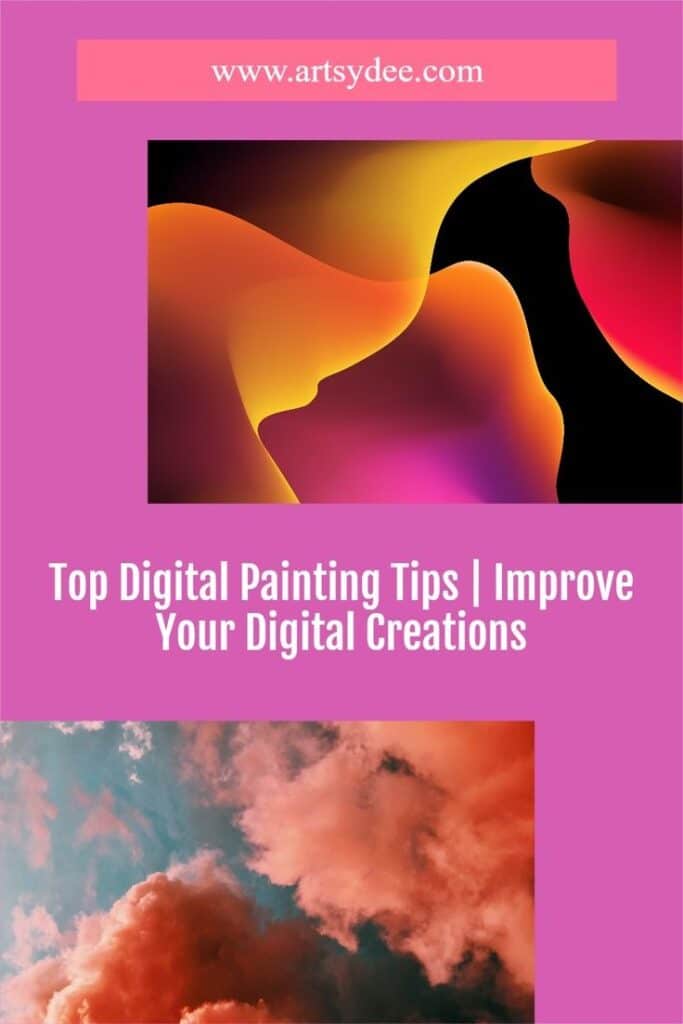
How can I get better at digital painting?
Draw more and draw often!
When you start drawing digitally, it’s easy to feel overwhelmed by the complexity of it all; there are so many features in Photoshop alone, and they’re constantly changing.
Your best bet is to learn them little by little and practice them as much as possible; try different brushes, techniques, and tools.
What are the different Digital Painting Techniques?
Drawing or Painting on a tablet, using your finger, a stylist, or pen.
Using a mouse, or drawing pad to draw on a PC or Laptop.
Drawing with your finger or a stylus on a mobile phone.
Why is digital art so hard?
The biggest problem with digital art is that it’s easy to get overwhelmed by the complexity of all the features in digital painting programs; there are so many tools and options that you can’t help but feel like giving up.
This is why most artists struggle with using a program like Photoshop because they don’t understand it or properly use it.
Taking time out of your day to practice is a huge part of improving in any form of art, so if you’re not getting the desired results, don’t give up and keep practicing.
When I began drawing digitally, I felt like it was taking me forever to finish my artwork because I didn’t understand the tools yet.
With practice and play, I started to pick up the essential rules behind the digital painting.
Once you learn how to use your chosen digital painting program properly, you’ll work faster and more efficiently.
[Related: Sitting Drawing Reference | 18 Free Poses to Help You with Figure Drawing]
What do you do with your digital painting after you’ve finished it?
- Save your work as a .jpg file so you can share it on social media sites like Facebook, Twitter, Instagram, Pinterest, etc.
- Email it to friends or family members who might enjoy it too!
- Make prints of your work to hang in your house or give as gifts to other people!
- Create a blog and upload all the art you’ve done digitally so anyone visiting your site can see what you did and learn from it.
- Buy a beautiful frame for your digital artwork to hang on your wall.
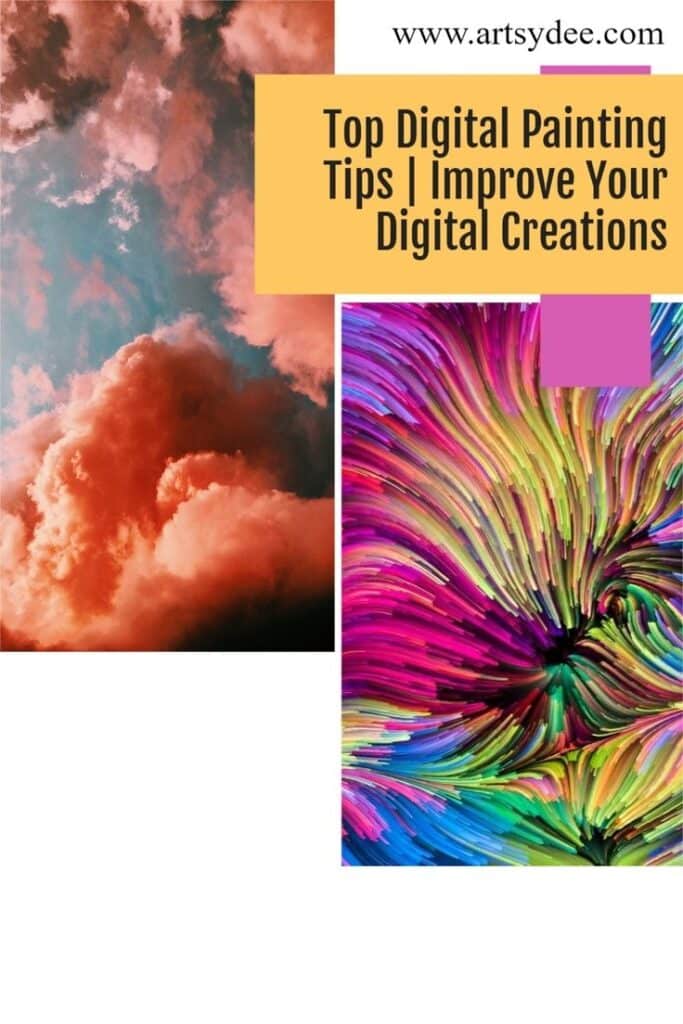
Conclusion
Digital painting is all about making it work for you and your creativity. Whatever style you prefer, the most important thing to remember when starting is to have fun!
If you want to try out digital painting but don’t have a tablet computer, I recommend using your finger as a stand-in for it!
I’ve found that painting digitally on my phone using my finger gives me a sense of what to expect.
It might not be very precise in brush size or shape, but it’s a good way to start.
Once you try painting digitally with your finger, you’ll get an idea of how easy and convenient it is to paint digitally as opposed to traditional painting.
I hope these digital painting tips have helped you start your digital art-making!
If there are other helpful digital painting tips you’d like to share, feel free to leave a comment below. I’d love to hear from all of you!
Other articles you may enjoy…
What is the Right Digital Art Canvas Size? Important things to Consider to Make the Best Choice.
Procreate Palm Support | The Ultimate Guide for Digital Art (2022)
Best iPad for Procreate 2022 (July)
Gloves for Drawing on Ipad | 9 Best Options
The best iPad screen protectors for drawing in 2022
21 Digital Painting Exercises and How They Help You Create Better Art
How to create the illusion of depth in art (2022)
Wondering How To Promote Your Art Online? 9 Easy Strategies for 2022
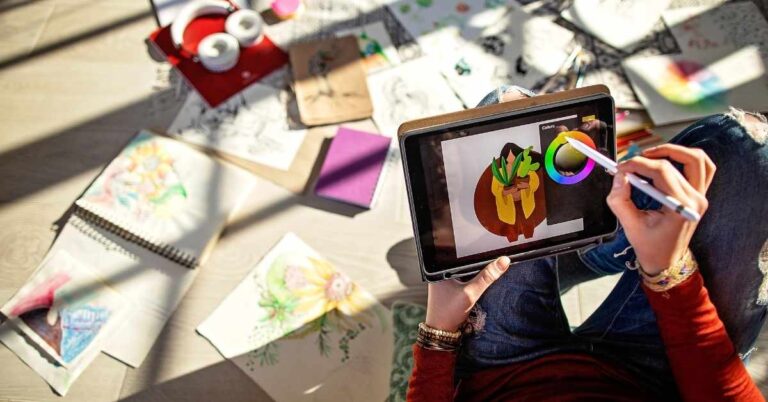
Really Helpful! Thanks for giving such an amazing tips for digital painting.
Glad to hear you found these tips helpful!